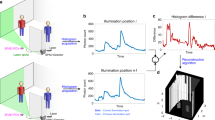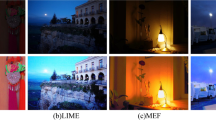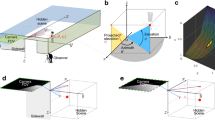Abstract
IF a dimly illuminated target is steadily fixated in a darkened room, all or parts of the target may seem to disappear and then reappear. There have been several reports that such disappearances are “structured” or “meaningful”1–3. For example, whole lines presumably tend to disappear and reappear as units. Such “structured” disappearances have also been reported in stabilized retinal image and after-image conditions4. Hebb interpreted the seeming ubiquity of whole line disappearances as support for the idea that the whole line is a basic perceptual “unit” in complex visual percepts.
This is a preview of subscription content, access via your institution
Access options
Subscribe to this journal
Receive 51 print issues and online access
$199.00 per year
only $3.90 per issue
Buy this article
- Purchase on SpringerLink
- Instant access to full article PDF
Prices may be subject to local taxes which are calculated during checkout
Similar content being viewed by others
References
McKinney, J. P., Science, 140, 403 (1963).
McKinney, J. P., Science, 144, 1359 (1964).
Schuck, J. R., Brock, T. C., and Becker, L. A., Science, 146, 1598 (1964).
Bennet-Clark, H. C., and Evans, C. R., Nature, 199, 1215 (1963).
Hebb, D. O., Amer. Psychol., 18, 16 (1963).
Evans, C. R., Brit. J. Psychol., 56, 121 (1965).
Author information
Authors and Affiliations
Rights and permissions
About this article
Cite this article
EAGLE, M., HILL, A. Do Disappearance Patterns in Low Illumination constitute a Perceptual Phenomenon or a Response Artefact?. Nature 224, 822 (1969). https://doi.org/10.1038/224822a0
Received:
Revised:
Issue date:
DOI: https://doi.org/10.1038/224822a0



